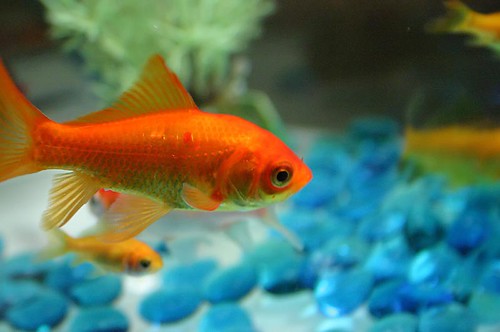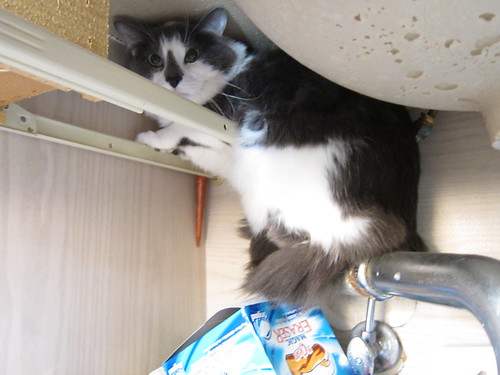I was kinda nervous because I haven't been to a public hack day before. We had one at work last year, but just an internal one, so whilst that was fun it was pretty much just working with people you worked with everyday. (A hack day, for anyone who may not know, is a day where designers and developers get together and work on "hacks", which could be little ideas for programs or extensions of existing code, useful apps, or just playing with technology in new and different ways.)
I've never been very forthcoming at going to events and meetups, even though I'd like to, I used to be really shy and sorta scared of meeting and talking to new people. :x However in the past year or so there have been times I've been nervous and gone ahead and done something anyway, then realised there was nothing to be nervous about - and that I got so much out of something, that I wouldn't have got if I'd just stayed at home. And yesterday was definately one of those times. :)
We kicked off about 10.30am where we all got name badges and had some hot drinks before discussing some project ideas. I was excited that I got the chance to team up with a couple of people who were into videogames and specifically RPGs, and we decided to experiment with the HTML5 canvas to make a simple browser based game. I actually experimented with canvas a bit at my company hackday, but focusing on the customising and saving your own images side of it. A game seemed more complicated and it was awesome to get the chance to collaborate with people who had some game programming experience and interest :D After a fusing of mutual interests and ideas, we decided to create a cat-based RPG, or as Jason (one of our team members) described it "An RPG, but with more cats". The name I came up with for this was "RPurrrG" (I know, I should totally go on the apprentice, right? Haha).
 |
| Jason, Ash, Perry and I get to coding and drawing RPurrG - photo belongs to Incuna |
I was pretty much up for/in the mood for doing design or front end bits depending on what would be useful to the team on the day. Since a game needs graphics and on a whim I'd decided to take along my Wacom tablet, I decided to focus on drawing the background and character graphics as well as doing some quick logo & interface design. We were lucky to have Perry from Incuna in our team to build the front-end so I enjoyed the process of giving him my initial sketches and then PSD for him to make into some lovely solid front-end code :) Also, I'd never really drawn animals for any real purpose before so it seemed a fun chance to do my hobby and for it to be useful :D
I think the thing we were all most excited about (probably coming from a fondness of retro videogames) was making the parallax scrolling background, particularly on the canvas, and it was great to see people making that work with graphics I'd made. Also, it's kinda dumb but I almost always draw animals from the front, so having to draw a side on cat character that also looked somewhat like he was walking, was a fun challenge. (I only just noticed I forgot to erase some buttons on the second frame - OH WELL XD)
The main character (or one of the classes you could choose) ended up being a pirate, and ultimately ended up being called Catbrush Purrwood, blatantly heavily inspired by my love of Monkey Island ;)
 |
| Drawing cats and creating an interface! |
As you can see the traditional magic user character choice was going to be based on Rincewind from the Discworld books, and there was going to be a third character called Robin Cat, the archer variation, based on Robin Hood, but I sorta ran out of time to draw him. XD The long term plan was that you'd get the usual variety of stats and that would make you stronger or weaker against certain characters, maybe in a simple Talisman way of fighters being a bit rubbish against magic based creatures, and so on. We didn't get chance to get all of this working, but maybe we'll carry on with it in future! (if the others aren't totally sick of cats by now.. haha).
Another great thing about the day - we ate soo much good food. Burritos for lunch, pizza for dinner, chocolate covered strawberries and fortune cookies in between. Geek fuel! :D
By the time we demoed the game, although there were lots of ideas and things left to do, indeed in terms of making it into a playable game, I think we achieved some great stuff in the time. Jason and Ash did a wonderful job on the parallax background and making the cat walk and jump :)
 |
| It's traditional for the first level of any game to be blue sky and green fields, right? :D |
Although I didn't do any coding on this project, I plan to have a better look at the code everyone did and understand how it's working, so it felt like a great chance for me to learn from more experienced coders than myself too :)
As well as demoing our project it was great to see the projects others had been working on during the day. Some guys worked on a TLDW extension for Chrome, so that if you thought a youtube video for example was too long and just wanted to get the gist of the info, you could click this button to access a transcript of it. Another idea was around kinetic typography and being able to type in words and animate them with Javascript related to what sort of words they were. Another cool thing was the idea of using all the old versions of the Oxford English Dictionary and as well as accessing them online, being able to discuss and share words, such as having a "dead word of the day". Being rather into language stuff myself, I would love to see this site for real!!
All in all it was a great day, I feel like I met lots of talented people and made some new friends, and also collaborating with new people was something I've never really done before - and now I really want to do more of! I'm going to make sure to go to as many events and meetups as I can in future because it's great to be around people who share my love of making nice and useful things for the web. (perhaps more of the nice and less of the useful when it comes to RPurrG.. ;)
Check out RPurrG so far..
You can try the game so far here - http://refreshoxford.co.uk/RPurrG/ (click a cat, enter your name, and go). You can pretty much only walk and jump (with spacebar) so far but.. hey! We're very proud :) And I just pretty much love all the cool stuff you can do with canvas. ^^
If you're interested you can also view the RPurrG code on Github here - https://github.com/refreshoxford/RPurrG
And lastly thanks Incuna for the fantastic day and food, and thank you Ash, Jason and Perry for making RPurrG possible!
You can try the game so far here - http://refreshoxford.co.uk/RPurrG/ (click a cat, enter your name, and go). You can pretty much only walk and jump (with spacebar) so far but.. hey! We're very proud :) And I just pretty much love all the cool stuff you can do with canvas. ^^
If you're interested you can also view the RPurrG code on Github here - https://github.com/refreshoxford/RPurrG
And lastly thanks Incuna for the fantastic day and food, and thank you Ash, Jason and Perry for making RPurrG possible!













